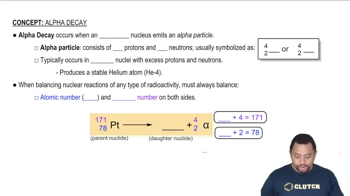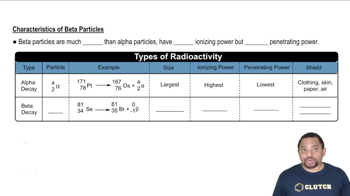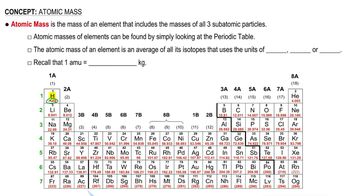Here are the essential concepts you must grasp in order to answer the question correctly.
Nuclear Decay
Nuclear decay is a process by which an unstable atomic nucleus loses energy by emitting radiation. This can occur in various forms, including alpha decay, beta decay, and gamma decay. Understanding the type of decay is crucial for predicting the particles produced and the resulting elements.
Recommended video:
Alpha and Beta Particles
Alpha particles consist of two protons and two neutrons, essentially a helium nucleus, and are emitted during alpha decay. Beta particles are high-energy, high-speed electrons or positrons emitted during beta decay. Identifying whether a decay process involves alpha or beta emission helps determine the resulting element and its atomic structure.
Recommended video:
Characteristics of Beta Particles
Mass Number and Atomic Number
The mass number is the total number of protons and neutrons in an atomic nucleus, while the atomic number is the number of protons. During decay processes, these numbers change, leading to the formation of new elements. Understanding how these numbers shift during decay is essential for predicting the products of nuclear reactions.
Recommended video:
 Verified step by step guidance
Verified step by step guidance

